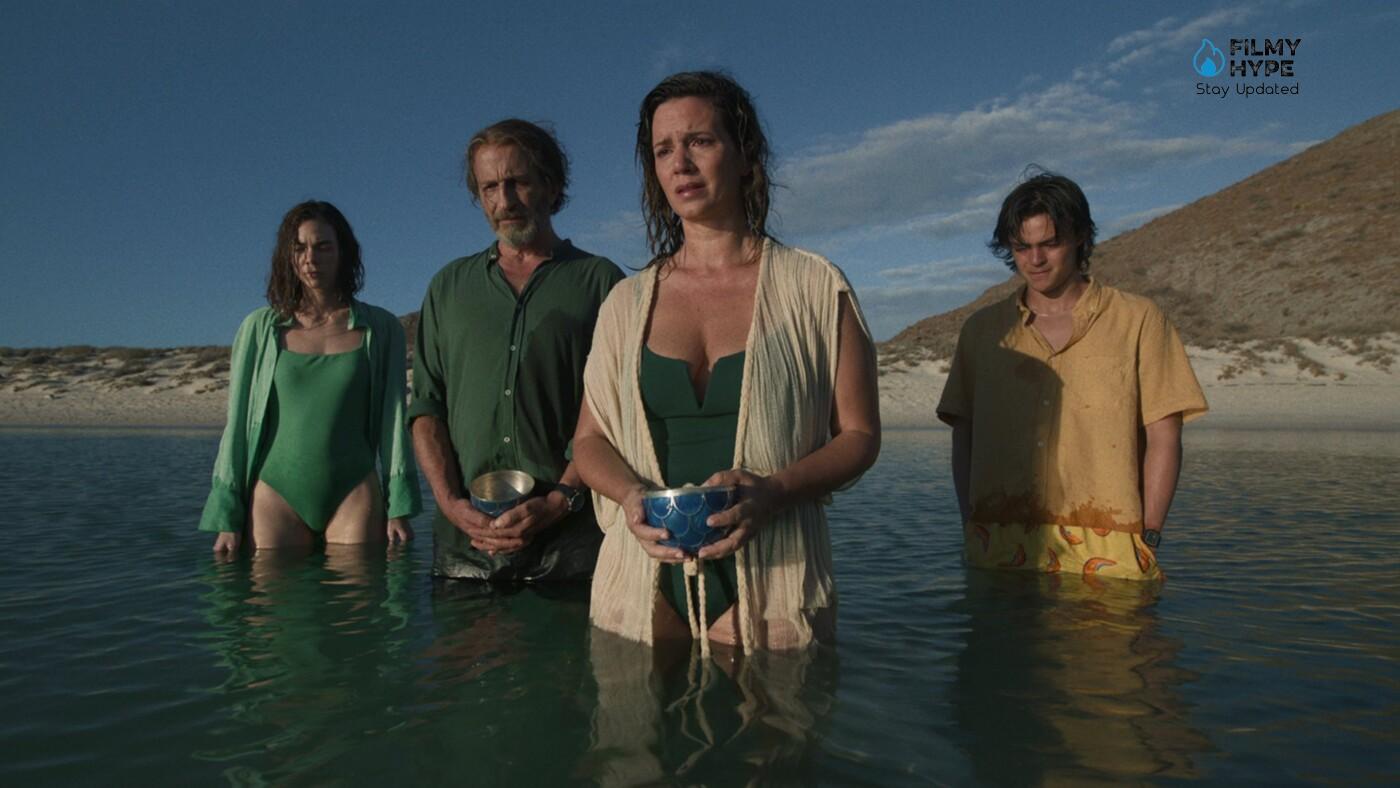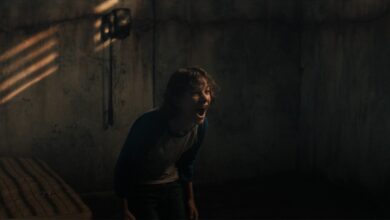Bardo Ending Explained: Is Silverio Gama Dead? The Ending Of The Film By Alejandro Gonzales Iñárritu
Bardo is the latest and most personal film from Oscar-winning director Alejandro Gonzales Iñárritu. In his latest work, the director tells a fictional story which however retraces his life path: we have a Mexican director – Silverio, played by Daniel Giménez Cacho – who left his native country to move to the United States. On the occasion of an award received, he will return home and the journey will lead him to relive various traumas from his past which, as we explained to you in our review of Bardo, mix in a continuous flow with the reality he is experiencing. Past, present, dream and reality become one in this film, in a succession of scenes of indisputable formal beauty but at the same time of great narrative depth. In the following article, we have decided to focus on the film’s ending, a decidedly turning point because it explains everything that happened previously. Before doing so, however, it is necessary to take a step back and quickly take stock of what happens during the course of the film, which will then be taken up again in the conclusion.

What Happens In Bardo?
The film’s first scene sees a man – and we follow from his perspective – making very high leaps in a desert as if he were about to take flight. In the end, he jumps higher than the others and never touches the ground again. This man is our protagonist Silverio, a very successful Mexican documentary filmmaker, who left his home country to live in the United States. Saverio is married to Lucia (Griselda Siciliani), and together they have two children, Camila (Ximena Lamadrid) and Lorenzo (Iker Sanchez Solano). Also at the beginning of the film, we discover that the couple had had another son, Mateo, but that he died shortly after his birth: the scene in which this sad episode is told to us is particularly striking, the newborn is born but then she decides to go back to her mother’s body, because “she says the world is real shit” the doctor will inform us. With this grotesque and surreal sequence, Iñárritu recounts the mourning for the loss of a son, who will always remain in his mother’s body (as an extremely painful memory) and “feed on her”.
As we anticipated, Saverio travels to Mexico to receive a lifetime achievement award and is the first Latin American author to be given such a prestigious award. However, the man is convinced that it is given to him only because the United States is trying to smooth out relations with Mexico, given Amazon’s acquisition of the state of Baja California (a fictitious fact). Xavier meets the US Ambassador in Chapultepec Castle, where he re-imagines/relives the famous Battle of Chapultepec, which took place in 1847. Mexican Army cadets are said to have fought to the death during that famous battle against the American soldiers; one of them, in particular, threw himself into the void wrapped in the Mexican flag to prevent it from falling into the hands of the enemy army. These young soldiers are still celebrated and remembered as heroes.
Later Silverio is invited to participate in the talk show of an old friend and colleague, Luis (Francisco Rubio). However, the protagonist is convinced that Luis despises him for having left Mexico for the United States, so he imagines a scene in which, while being interviewed by his friend, both he and the public cruelly make fun of him. In reality, Silverio doesn’t dare to show up at his friend’s show and doesn’t answer his worried calls. Meanwhile, we discover that Silverio is working on a documentary on Mexican “migrants”, the poorest ones who find themselves crossing the border and risking their lives. His son Lorenzo reminds him that he left Mexico for the United States, but he is a completely different, “first-class” immigrant who can return to his country whenever he wants. We thus realize the great weight that weighs on the protagonist’s shoulders, the sense of guilt for having left Mexico but for having done so not to survive (as the people at the center of his new documentary do) but simply to be successful in life.
Later we find ourselves at the party in honor of Silverio for the award received. There we meet most of his family – which he doesn’t seem to care much about. Taking refuge in the bathroom to avoid the moment of the speech, Silverio imagines meeting his father, who passed away some time and talking with him about his life and the success he has achieved (his father tells him that in time this will “poison” him). A little later we also meet the protagonist’s mother, who is still alive, but she suffers from dementia. After leaving the woman’s house, Silverio finds himself in the center of Mexico City, and what is perhaps one of the most significant scenes in the film begins: after seeing a woman suddenly fall to the ground (the woman is a “desaparecida”, neither dead nor alive), around him everyone begins to collapse like flies.
Silverio thus finds himself walking through a deserted city, full of the dead, and meets – on top of a pyramid made of corpses – what can be considered one of those responsible for the country’s bloody destiny: the conquistador Hernán Cortés. The two discuss what the Spaniards, the church and Europe, in general, have brought to Mexico: death and destruction. Shortly before we had even seen an important deity of the Aztec pantheon, Centeòtl (God of crops and maize), torn to pieces and dying. Cortés replies however that he only tried to do something good, he is the father of modern Mexico as we know it because he is the father of the first mestizos.
After this strange conversation, the lights come on and we discover that we are on a film set, all the dead Silverio is surrounded by having appeared in the film he is shooting. In the final part of the film, Silverio and his family are on vacation in Baja California, where they release Mateo’s ashes into the sea, which they had always kept with them since his death. Silverio imagines that his missing newborn son crawls down to the water and lets himself be dragged away. Lorenzo later tells him how, when he was a child and they moved to the US, he brought with him a bag of pet axolotls (a type of salamander native to Mexico). Obviously, during the journey, the animals died, and he never confessed it to anyone.
Bardo Ending Explained: Is Silverio Gama Dead?
For our explanation of Bardo’s ending, we cannot ignore a fundamental scene: while he is on the subway, after having bought Lorenzo some new axolotls, Silverio is suddenly struck by a stroke. The box with the axolotls breaks (a sequence we had already seen at the beginning of the film and we hadn’t been able to explain). After a few hours, Silverio is discovered by a cleaning lady who calls an ambulance.
At this point we realize that Silverio has been in a coma the whole time: what we saw throughout the film was his life – especially his last days – dreamed and re-imagined while unconscious. Everything mixes – even the dialogues and conversations that his loved ones have near his hospital bed – and the man lives in a parallel reality made up of dreams and reality. During his coma, Silverio attends the award ceremony in his honor: now it is his daughter who accepts the award instead of him.
Later Silverio returns to the desert that we saw at the beginning of the film (which is the same one in which he was working on his latest documentary). There he meets the deceased members of his family (like his father) but also those still alive, but the man ignores their call and tells them that for them, where he is, “there is nothing”. At this point Silverio starts jumping again, as we had seen at the beginning of the film, after the last jump, the highest one, he never returns to the ground. The film then closes with the death of Silverio, who leaves his life behind and moves on.
The Meaning of the Movie
During Bardo’s dreams, fears, and memories mix in a continuous flow: it is no coincidence that the full title of the work is Bardo, “A false chronicle of some truths”. The surreal “visions” that accompany the protagonist throughout the narrative serve to translate the discomfort he feels and, in particular, the bond of love and hate he has with his country of origin. Mexico for Silverio is both the homeland he loves (as we see he does not let his son Lorenzo criticize it), and a place he despises, which on the one hand did not allow him to realize himself and which forced him to migrate to the United States and, which, on the other hand, has major problems, such as crime and the “disappeared”.
Silverio knows she is a “first-class” immigrant, who didn’t have to leave Mexico to survive, and one of her ways to deal with the guilt she feels is to make a documentary about those who are forced to leave their home in order not to die, those people who lose their lives crossing the border, but also the disappeared and victims of drug trafficking. It is no coincidence that another of the main elements of the film is that of Mexican historical memory, which makes its way into the narrative in the sequence of the meeting with Cortés: being children of the Conquest, of a traumatic event of unheard-of violence, has become part of the collective conscience of the Mexican people and it also has a very strong influence on today’s citizens. Silverio and Hernán Cortés question themselves, smoking a cigarette on a mountain of corpses, about what it means to “be” Mexican: the conquerors are both the founding fathers of modern Mexico (they are the “parents” of a mestizo people) and their executioners.
Telling The Reality
Is it possible to tell the story exactly as it happened? Is there a unique version of the past? What the film wants us to understand is that the account of the past is always a question of perspectives, in this case, we find the two opposite poles of Cortés’ opinion and that of Silverio. Even a documentary, no matter how objective it tries to be, is tied to the point of view of who makes it.
In the same way, the (auto)biographical account of a life, the one lived by Silverio and that of the director Alejandro Gonzales Iñárritu that transpires in the film, is nothing more than a filtered and subjective vision, such as that of a man in a coma who ” relives” some important moments of his existence. Life, as Iñárritu tells us in his film, doesn’t stray so far from a dream, which is likewise a reworked vision of reality by our unconscious.






